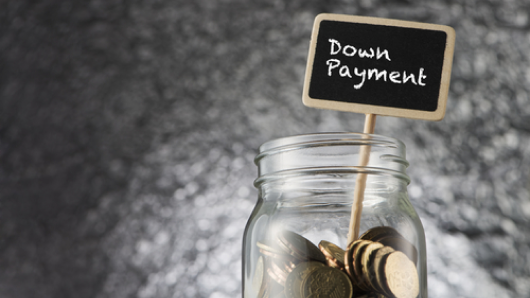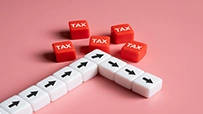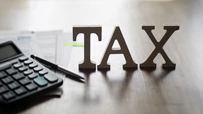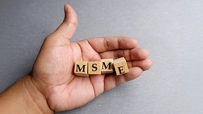Two-Wheeler Loan Minimum Down Payment: How Much Should You Pay?
December 09, 2024

Dreaming of owning a two-wheeler that can add convenience and speed to your daily commute? We understand the importance of having your own means of transportation. Many banks offer two-wheeler loans that make it easier for you to bring home your dream ride. But before you get ready to hit the road, it's crucial to understand how much you should pay as a down payment for your bike loan.
This article will help you determine the right way to go about with two wheeler loan down payment. We'll also provide loan repayment tips on making an informed decision regarding bike loan initial payment and calculating your equated monthly instalments (EMIs). Understanding these aspects can help you better plan your finances and ensure a smooth loan repayment journey.
How Much Should You Pay as a Down Payment?
When taking out a two-wheeler loan, it's common for banks to ask for a down payment. The down payment is the initial amount you pay to purchase your bike before taking a loan. It reduces the loan amount and helps lower your EMIs.
The ideal two-wheeler loan down payment varies across banks. Ujjivan SFB offers financing up to 95% of the on-road price of the vehicle capped at ₹2.75 lakh. This means, if you're eligible for the maximum loan amount, you have to pay the remaining amount pertaining to vehicle cost from your pocket as down payment.
However, your loan eligibility is decided by your bank based on your credit score, repayment capacity, credit history, among others. So if the advertised funding percentage is up to 95%, you may qualify for 80% financing. The remaining amount you have to pay out of your pocket. This is just as an example - the point is your down payment is directly related to your two-wheeler loan eligibility.
To determine how much you should pay as a two-wheeler loan down payment, consider the following factors:
- Loan eligibility: Calculate your loan eligibility based on your income and the bank's criteria. This will give you an idea of the maximum loan amount you can obtain.
- Affordability: Assess your monthly budget and determine how much you can comfortably allocate towards the EMIs. A higher down payment reduces the loan amount, resulting in lower EMIs.
- Tenure: Decide on the loan tenure that suits your financial goals. A shorter tenure leads to higher EMIs but reduces the interest burden in the long run.
- Interest rate: Consider the interest rate offered by the bank. A higher down payment can help negotiate a lower interest rate.
Example 1:
Let's say you want to buy a bike worth ₹1 lakh and have a maximum loan eligibility of ₹80,000 based on your income. If you decide to pay a 20% down payment, you would need to pay ₹20,000 upfront, reducing your loan amount to ₹80,000.
Example 2:
If you have a higher disposable income and can afford a larger down payment, paying 50% (₹50,000) as down payment for the same bike would further reduce your loan amount to ₹50,000.
Consider your financial situation and repayment capacity to decide on the down payment.
Benefits of a Higher Down Payment
Paying a higher motorcycle loan down payment offers various advantages:
- Lower EMIs: A higher down payment reduces the loan amount, leading to lower EMIs and decreasing the interest burden over time.
- Quicker repayment: With lower EMIs, you can repay the loan faster, reducing the overall tenure.
- Better interest rates: A larger initial payment can help negotiate better interest rates with the bank.
- Lower risk: Reducing the loan amount decreases your financial liability and minimizes the risk of defaulting on payments.
However, remember that paying a higher down payment might impact your immediate cash flow. It's crucial to strike a balance between reducing your loan burden and maintaining liquidity for other financial needs.
Impact of a Lower Down Payment
Opting for a lower two-wheeler loan down payment has its own implications:
- Higher EMIs: A lower down payment increases the loan amount, leading to higher EMIs and potentially higher interest payments.
- Longer tenure: With higher EMIs, the loan tenure may extend, resulting in a longer repayment period.
- Higher interest rates: Banks may offer higher interest rates for loans with lower down payments.
- Increased financial liability: A higher loan amount results in a larger financial liability over a longer period.
While a lower down payment may provide greater liquidity in the short term, it's important to consider the long-term implications of higher EMIs and interest payments. Use a loan EMI calculator to check your EMI obligations so that you can plan your loan better.
Loan Repayment Tips for Making the Right Initial Payment
Here's a few loan repayment tips to help you make the right bike loan initial payment:
- Assess your financial situation: Consider your current income, expenses, and savings. Evaluate how much you can comfortably pay upfront without compromising your financial stability.
- Plan for other costs: Remember to account for additional costs such as registration charges, insurance premiums, and maintenance expenses. Setting aside funds for these expenses separately will help avoid any last-minute financial strain.
- Negotiate with the dealer: Don't hesitate to negotiate with the dealer for a better deal on the vehicle or accessories. A lower on-road price can reduce both your loan amount and down payment.
Final Thoughts
Determining the right two-wheeler loan down payment is crucial for managing your finances effectively. By assessing your affordability and considering factors like loan eligibility, tenure, and interest rates, you can decide how much to pay upfront. Remember to strike a balance between reducing your loan burden and maintaining liquidity for other financial needs.
Disclaimer:
The contents herein are only for informational purposes and generic in nature. The content does not amount to an offer, invitation or solicitation of any kind to buy or sell, and are not intended to create any legal rights or obligations. This information is subject to updation, completion, amendment and verification without notice. The contents herein are also subject to other product-specific terms and conditions, as well as any applicable third-party terms and conditions, for which Ujjivan Small Finance Bank assumes no responsibility or liability.
Nothing contained herein is intended to constitute financial, investment, legal, tax, or any other professional advice or opinion. Please obtain professional advice before making investment or any other decisions. Any investment decisions that may be made by the you shall be at your own sole discretion, independent analysis and evaluation of the risks involved. The use of any information set out in this document is entirely at the user’s own risk. Ujjivan Small Finance Bank Limited makes no representation or warranty, express or implied, as to the accuracy and completeness for any information herein. The Bank disclaims any and all liability for any loss or damage (direct, indirect, consequential, or otherwise) incurred by you due to use of or due to investment, product application decisions made by you on the basis of the contents herein. While the information is prepared in good faith from sources deemed reliable (including public sources), the Bank disclaims any liability with respect to accuracy of information or any error or omission or any loss or damage incurred by anyone in reliance on the contents herein, in any manner whatsoever.
To know more about Ujjivan Small Finance Bank Products Visit:"https://www.ujjivansfb.in"
All intellectual property rights, including copyrights, trademarks, and other proprietary rights, pertaining to the content and materials displayed herein, belong
to Ujjivan Small Finance Bank Limited or its licensors. Unauthorised use or misuse of any intellectual property, or other content displayed herein is strictly prohibited and the same is not intended for distribution to, or use by, any person in any jurisdiction where such distribution or use would (by reason of that person’s nationality, residence or otherwise) be contrary to law or registration or would subject Ujjivan Small Finance Bank Limited or its affiliates to any licensing or registration requirements.
FAQs
1. How much down payment is typically required for a two-wheeler loan?
The required down payment for a two-wheeler loan usually ranges from 10% to 30% of the vehicle's price. However, this can vary based on the bank's policies and your loan eligibility. Contact your bank for better clarity
2. Can I choose to pay a higher motorcycle loan down payment?
Yes, you can choose to pay a higher down payment. Paying more upfront reduces the loan amount, leading to lower monthly EMIs and overall interest payments.
3. What factors should I consider when deciding the down payment amount?
When deciding on the down payment amount, consider your budget, loan tenure, interest rate, and monthly EMI affordability. A higher two-wheeler loan down payment can make the loan more manageable but can have an impact on your savings.
4. How does my credit score affect the motorcycle loan down payment?
A higher credit score can lead to more favourable loan terms, including a lower required down payment. Conversely, a lower credit score might result in a higher down payment requirement.
5. What are the benefits of making a larger down payment?
Benefits of making a larger down payment include reduced loan principal, lower EMIs, decreased total interest paid over the loan tenure, and potentially better loan terms from the bank.
6. Can I get a loan with zero down payment?
Some banks offer loans with zero down payment, but these usually come with higher interest rates and stricter eligibility criteria. It’s important to evaluate the long-term cost before opting for such a loan.
7. Is the motorcycle loan down payment amount negotiable with the bank?
While the bank sets the minimum down payment requirement, you can choose to pay more. However, negotiating the minimum required down payment is generally not possible.
8. Can I use a personal loan to cover the down payment?
Yes, you can use a personal loan to cover the down payment, but you’ll have two loans to manage. Ensure you can afford the additional financial burden and consider the interest rates on both loans.
Latest Blogs

How to Link PAN with Aadhaar: Step-by-Step Guide & Consequences of Not Linking
Linking your Permanent Account Number (PAN) with your Aadhaar is no longer just a best practice.

Annual Information Statement (AIS): A Complete Guide for Stress-Free ITR Filing
India’s tax season is in its final stretch.

ITR-1 (Sahaj) Restrictions: Income Sources Not Allowed & Filing Rules
With just a few days left before the 15 September 2025 deadline for filing Income Tax Returns (ITRs) for Assessment Year (AY) 2025-26, many taxpayers are rushing to submit their forms online.

GST Rate Cut on Electronics: What It Means for Consumers and Retailers
India’s Goods and Services Tax (GST) system has entered a new era with the rollout of GST 2.0, effective from September 22, 2025.

Banking Safety Guide: How to Avoid QR Code Frauds While Making Payments
India’s love for QR code payments has made transactions lightning-fast, but also opened a new front for cybercriminals.





